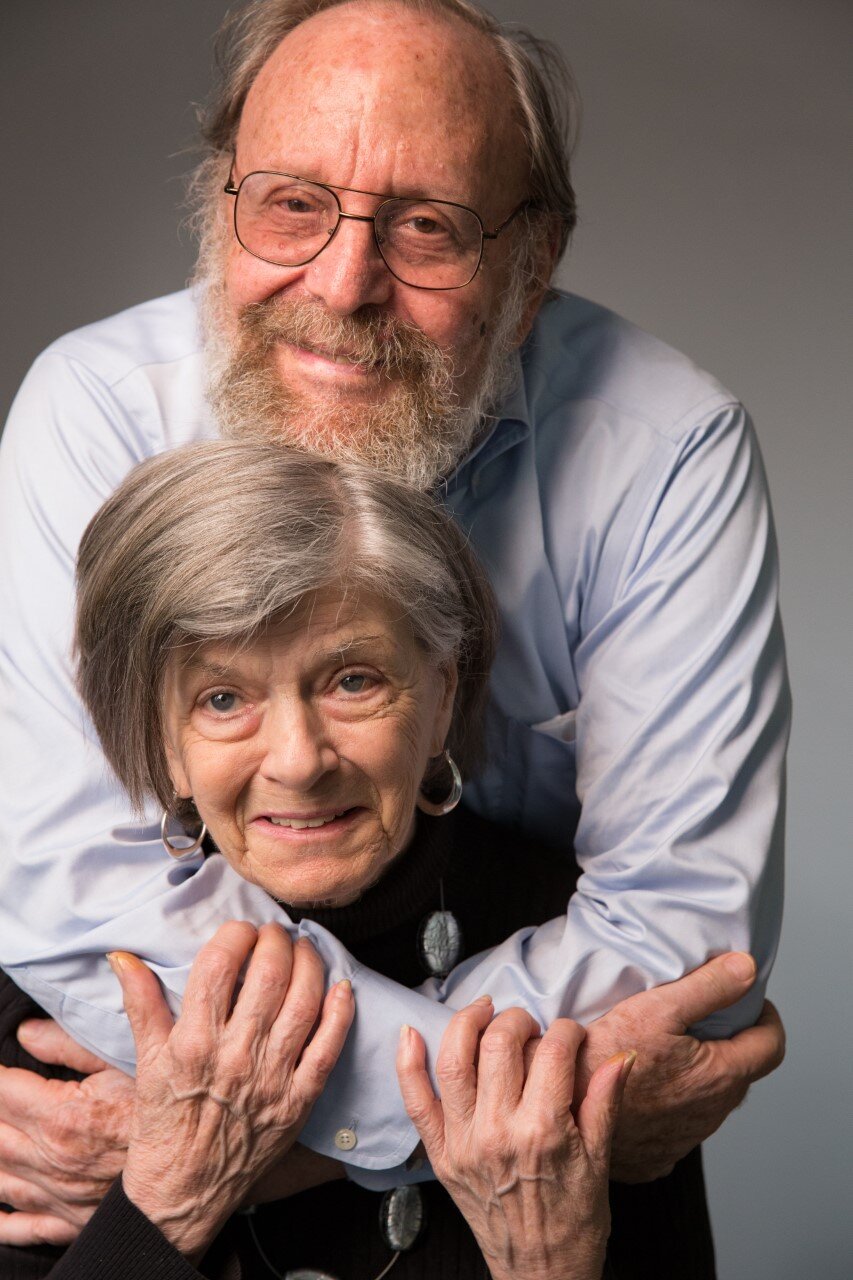The Music of Listening
The Music of Listening
by Ira G. Asherman
Sitting quietly with her coffee, my wife Sandy sings the songs of our youth all playing softly on our stereo. She does not miss a beat or a word. She seems to know them all by heart. Her singing makes our mornings special and allows me, be it just for a moment, to forget that Sandy is living with Alzheimer’s. The morning is a special time for us.
Ira and Sandy Asherman. Photo by Erica Berger.
Sandy and I met in 1975. It did not take us long to realize that despite growing up in two very different parts of New York – Sandy in the small town of Maybrook and I in Brooklyn – we shared a very similar taste in music. We both grew up and entered adulthood listening, singing and dancing to The Platters, Peter Paul and Mary, Simon and Garfunkel, The Kingston Trio, and Carole King, among others.
“My objective, with all of this music, is to create a moment that allows us to move Alzheimer’s out of our life, even if it be for just a few minutes.” – Ira Asherman
Memory loss entered our lives in 2007 with a diagnosis of Mild Cognitive Impairment. For the most part, MCI did not alter our lives. We continued traveling and working and generally having a good time. Clearly we had problems, but they were all manageable. My wife stayed physically active and played every computer game available. The games and the exercises came with us on business trips and vacations. Alzheimer’s entered our lives in 2012 and while our life still seemed manageable, it clearly became more complicated and eventually we understood that changes needed to be made in how we lived. Alzheimer’s is one of those diseases that does not get better. It can be stalled, held back, but eventually it takes you. You become its prisoner. How fast it progresses varies by individual, but there is no escape. As it tightened its grip, my wife became less active and the computer games and exercises were now seen as boring and a waste of time. We searched for options, something that would make life a bit easier and give my wife some pleasure.
It took us a while to appreciate that the music of our youth could play a significant role in easing the trauma of this disease. We moved from our favorite CDs to building our own Sandy specific music list. With the advent of Pandora, Spotify, Apple Music and Amazon, we could now listen not only to our favorite artists, but to our favorite individual songs. We built three sets of music. The first and still most frequently listened to was our morning music, which is a list of forty songs beginning with “Scarlet Ribbons” by the Kingston Trio, and, in a bow to more contemporary artists, ending with Josh Groban’s “You Raise Me Up.” With the morning music, we sing along and occasionally will dance to the Platters. This initial list was soon followed by a second and third song list. The second is a compilation from The Unforgettables, a chorus for those with memory issues and their caregivers, in which Sandy participates.
The music provides our afternoon respite, ending in the evening with some of our favorite love songs. My objective, with all of this music, is to create a moment that allows us to move Alzheimer’s out of our life, even if it be for just a few minutes.
Has it been worth all the effort? For me, the answer is a resounding yes. The music has provided a welcome respite for me and a great deal of enjoyment for my wife. If you have any doubt, the literature is replete with articles on the value of music to those living with Alzheimer’s. Have some fun, become your own disc jockey.
To ensure your success in implementing a music program, the following suggestions will help:
Select music or performers that you know that your partner or parent likes, and to which they have reacted positively in the past.
Ask close friends and relatives for music suggestions.
Use one of the online music services to build your song list. It will make your life much easier. It also allows you to add and delete songs on a regular basis.
Select at least twenty songs. That will keep the music going for a significant period of time. Don’t be afraid to add songs.
Sing along if you know the songs.
Monitor the impact. Are your choices working, and if not what changes are needed? Do not give up!
Additional Resources & Suggested Readings:
MUSIC & MEMORY® is a non-profit organization that helps individuals with a wide range of cognitive and physical conditions to engage with the world, ease pain, and reclaim their humanity through the use of personalized music.
Musicophilia: Tales of Music and the Brain by Oliver Sacks. Price: $16.99
This Is Your Brain on Music: The Science of a Human Obsession. Price: $15.30
In the documentary Alive Inside, filmmaker Michael Rossato-Bennett follows social worker Dan Cohen, who advocates for the use of music therapy for dementia patients. The film chronicles the astonishing experiences of individuals around the country whose minds have been revitalized and awakened by the simple act of listening to the music of their youth. Available for rent on YouTube and Amazon Prime.

